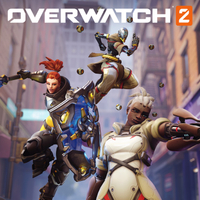Overwatch 2: What's new and different with the sequel?
Curious about what Overwatch 2 is all about compared to the original game? Here's what you need to know.
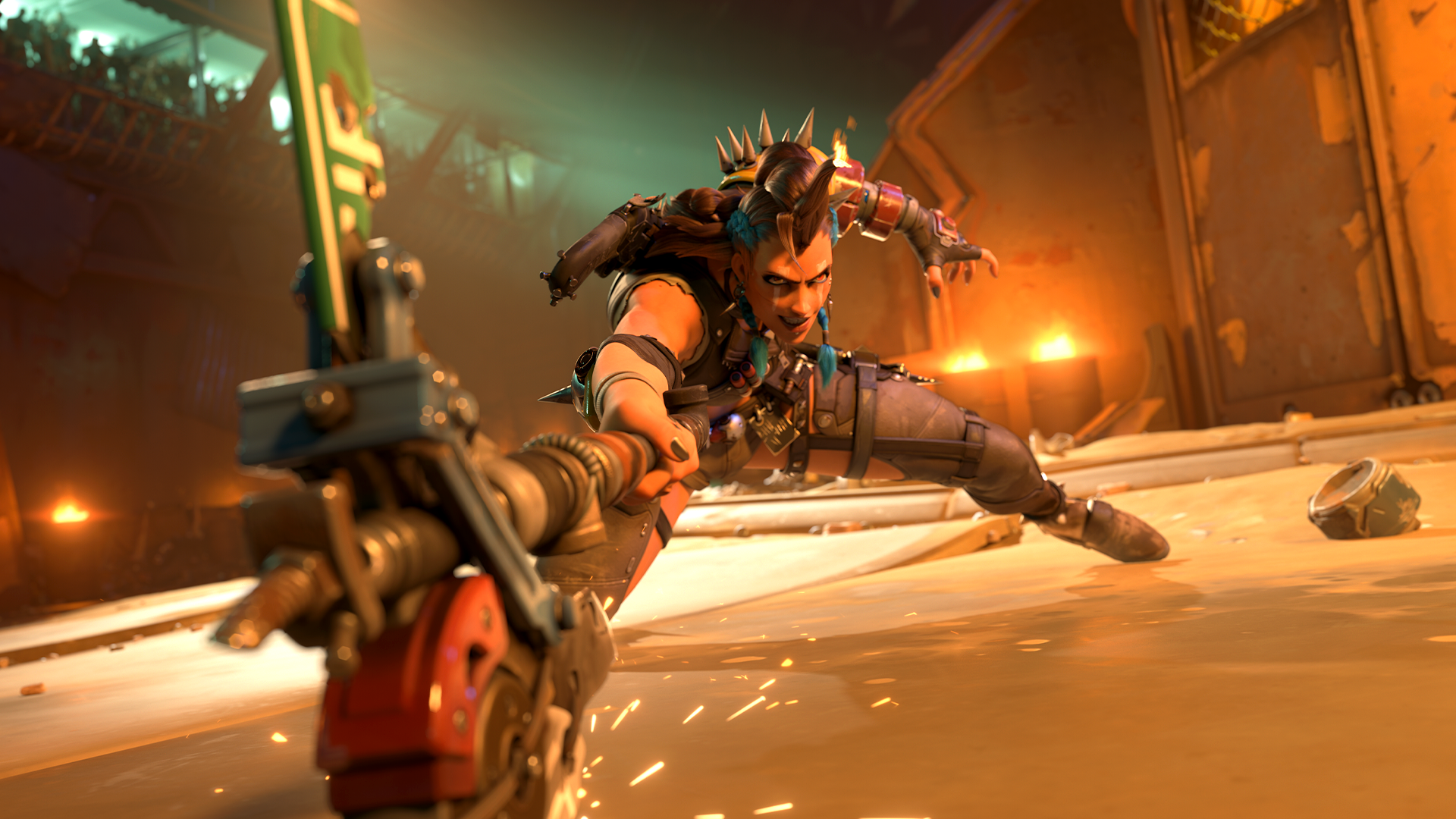
What is Overwatch 2? That's a question that countless people in the gaming community have asked since it was announced back in 2019, as Blizzard's choice to position it as a sequel to the original game rather than a massive update has confused many. Now that Overwatch 2 is mere days away from releasing, many still don't quite understand what makes it new and different compared to the original game.
If you're confused about the game, don't worry — we've prepared a quick and simple guide that will bring you up to speed with everything you need to know about Overwatch 2, including what it adds to the Overwatch experience, how it changes it, and details about what's coming down the line.
What's new in Overwatch 2?
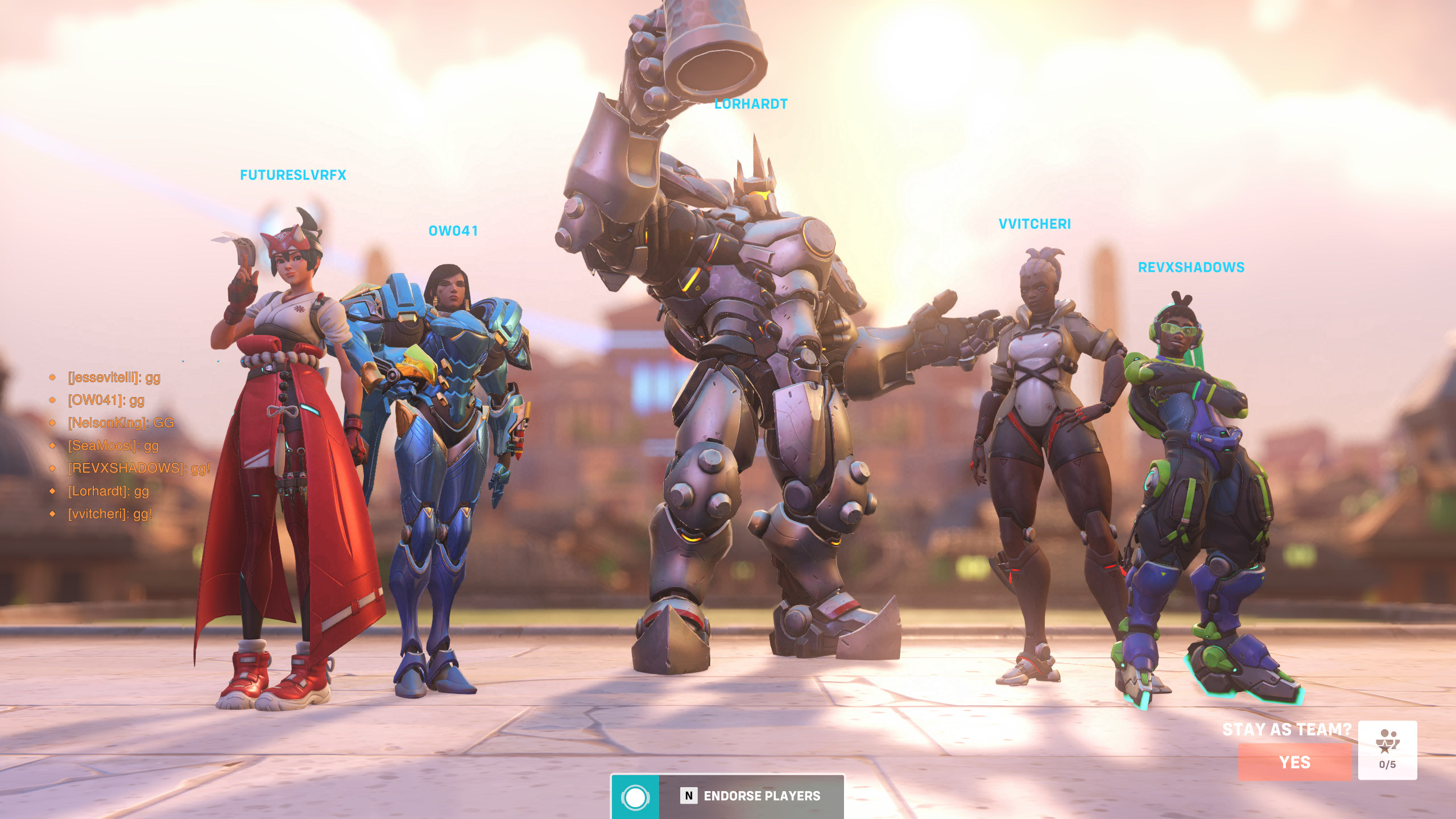
Overwatch 2 isn't a sequel in the traditional sense, though some might argue that it feels like one due to how massive the changes it makes are. The core of Overwatch is ultimately the same in Overwatch 2 — the game is a teamwork-focused shooter with a combination of shooter mechanics and MOBA-style abilities — but Blizzard has redone its entire structure in an effort to improve the flow of gameplay, make the game more appealing to modern audiences, and remove barriers to entry.
The biggest change is arguably that the developers have moved Overwatch's 6v6 format to a 5v5 one in Overwatch 2, removing one tank hero from each team since many fans frequently complained about how oppressive damage mitigation abilities like barriers could be when spammed by two players. Additionally, crowd control and stun abilities have been reduced across the board to make moment-to-moment gameplay less frustrating and more enjoyable. These changes, along with some significant hero changes and reworks that ensure characters feel good to play in this new format, makes Overwatch 2 a faster and more active experience than the original was. The game also sports an updated presentation, complete with new default hero appearances, sharper textures, new lighting, and an impressive new sound design.
The game is also going free-to-play, making jumping in to see what Overwatch is all about easier than ever before. Something important to note about this is that all players get access to the original Overwatch roster as well as Sojourn and Junker Queen by default, though players that never played the original game will have to complete a lengthy tutorial process Blizzard calls the "First Time User Experience" to access all of them (grouping up with friends temporarily removes the restrictions).

Additionally, Blizzard has also committed to a seasonal content release schedule with Overwatch 2, promising players that a new hero, map, or game mode will come out at the start of each nine-week season. New heroes, like the kunai-slinging Kiriko will specifically come out once every other season, meaning that fans can expect a new playable character to arrive every six months. Each season will come with an 80-tier Battle Pass attached, too, which replaces Overwatch's aging loot box system with one similar to what you'll find in other games like Fortnite and Apex Legends. These Battle Passes will feature various cosmetic rewards (including new customizable Mythic skins), and progressing through them also serves as the primary way to unlock new heroes.
Overwatch 2's seasonal Battle Pass will be split between two reward tracks. The free-to-play track offers fewer rewards and access to the season's new hero on Tier 55 if there is one, while the Premium $10 track gives players the opportunity to earn everything from the Battle Pass and provides instant access to any new hero added that season (it also provides a 20% XP boost for the season it's active).
Get the Windows Central Newsletter
All the latest news, reviews, and guides for Windows and Xbox diehards.
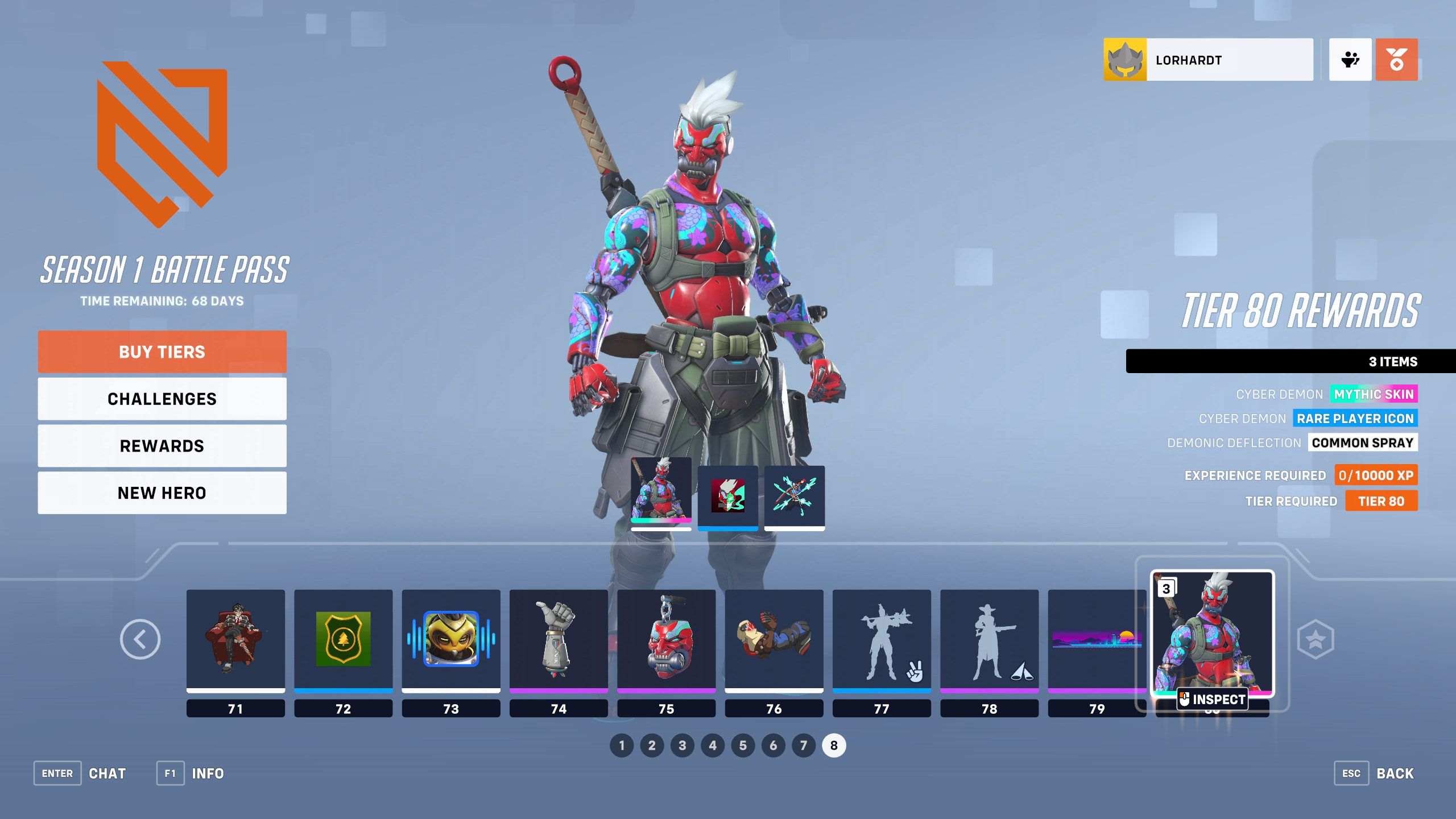
Progression through the Battle Pass requires XP, which you primarily earn by finishing matches but can also get from completing daily, weekly, seasonal, and lifetime gameplay challenges. These challenges are fairly simple and straightforward for the most part, and daily and weekly ones — the ones that give the most XP by a wide margin — are generic in nature and never force you to play specific heroes. Challenge completions also award you Overwatch Coins that you can use in Overwatch 2's new Shop, which offers a rotating stock of skins, weapon charms, and other cosmetics. Overwatch Coins can also be purchased with money at a rate of 100 per dollar spent.
Buying the Premium Battle Pass requires $10 worth of Overwatch Coins, meaning that you could save up the currency you earn to purchase Premium Battle Passes without spending money. You could also use Overwatch Coins to purchase new heroes from previous seasons in the Shop, which is where Blizzard says they'll go after the season they released in ends and the Battle Pass that featured them is no longer accessible. Alternatively, you'll also be able to acquire Overwatch 2's older heroes by completing special challenges.
Overwatch 2 PvE and campaign
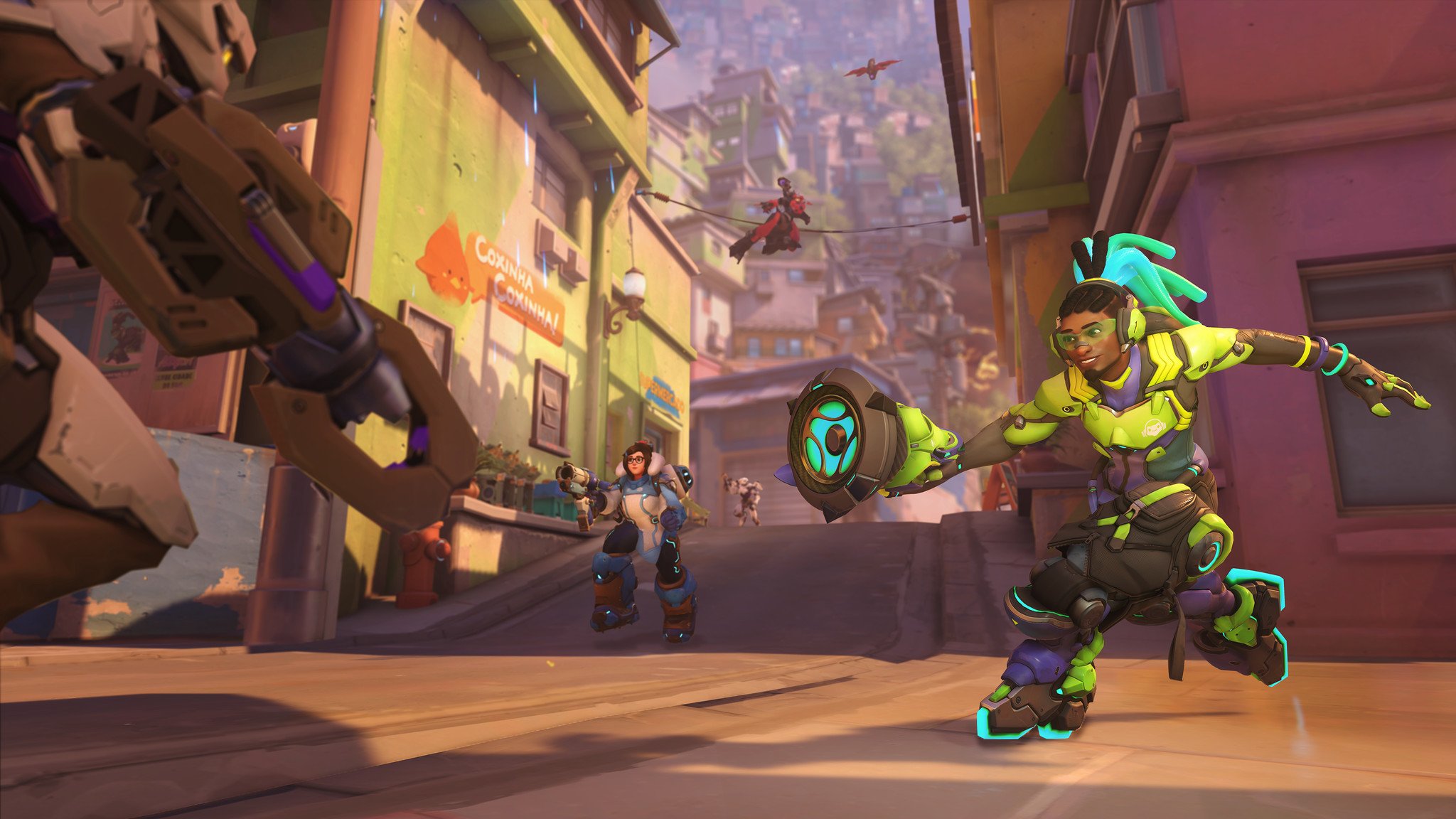
Overwatch 2 will also receive substantial PvE and campaign content additions in the future. They were originally going to launch alongside the PvP, but Blizzard chose to release the competitive multiplayer side of the game first so that players would have something to enjoy as soon as possible. Now, the developers have said that Overwatch 2's PvE will be released at some point in 2023.
Overwatch 2's PvE campaigns will include fully fleshed out narratives, complete with cutscenes, dialogue, and more. Players will also be able to play as iconic heroes like Lucio and Reinhardt through a wide variety of missions and levels, and will have the ability to make their characters more powerful and effective with buffs and upgrades. It's not entirely clear whether or not PvE content will be free-to-play or paid right now, but when Overwatch 2 was originally announced, Blizzard made it sound like it would require a purchase.
Overwatch 2 launches on Xbox Series X|S, PS5, PS4, PC, and Nintendo Switch on October 4, 2022. It's likely going to be one of the best Xbox shooters available, and since it's free-to-play, it doesn't cost anything to check it out. Alternatively, players can purchase the Overwatch 2: Watchpoint Pack that provides access to Season 1's Premium Battle Pass, 2,000 Overwatch Coins, and a bundle of unique Legendary skins.
Overwatch 2: Watchpoint Pack
The $40 Overwatch 2: Watchpoint Pack offers fans a variety of benefits that will allow them to get guaranteed access to Season 1's Premium Battle Pass track, unlock some unique rewards, provide some in-game currency to use when Overwatch 2 launches, and more.
Brendan Lowry is a Windows Central writer and Oakland University graduate with a burning passion for video games, of which he's been an avid fan since childhood. He's been writing for Team WC since the summer of 2017, and you'll find him doing news, editorials, reviews, and general coverage on everything gaming, Xbox, and Windows PC. His favorite game of all time is probably NieR: Automata, though Elden Ring, Fallout: New Vegas, and Team Fortress 2 are in the running, too. When he's not writing or gaming, there's a good chance he's either watching an interesting new movie or TV show or actually going outside for once. Follow him on X (Twitter).
